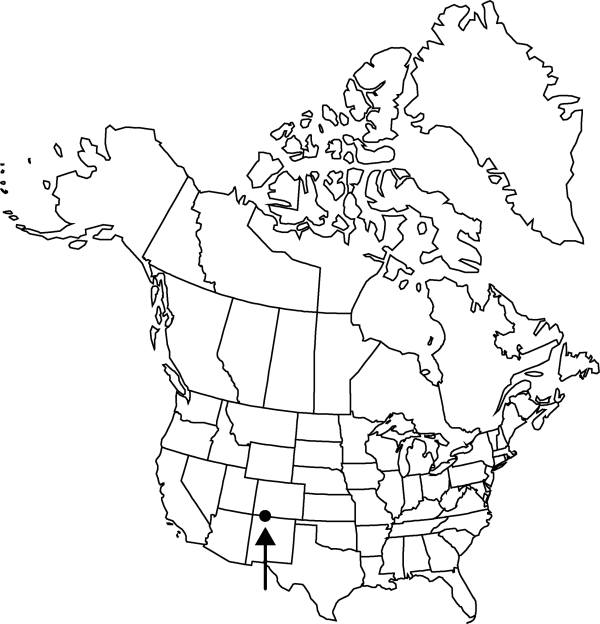Difference between revisions of "Pediocactus knowltonii"
Cact. Succ. J. (Los Angeles) 32: 193. 1960.
FNA>Volume Importer |
FNA>Volume Importer |
||
| Line 12: | Line 12: | ||
|name=Pediocactus bradyi var. knowltonii | |name=Pediocactus bradyi var. knowltonii | ||
|authority=(L. D. Benson) Backeberg | |authority=(L. D. Benson) Backeberg | ||
| − | }}{{Treatment/ID/Synonym | + | }} {{Treatment/ID/Synonym |
|name=Pediocactus simpsonii var. knowltonii | |name=Pediocactus simpsonii var. knowltonii | ||
|authority=(L. D. Benson) Halda | |authority=(L. D. Benson) Halda | ||
| Line 31: | Line 31: | ||
|distribution=N.Mex. | |distribution=N.Mex. | ||
|discussion=<p>Of conservation concern.</p><!-- | |discussion=<p>Of conservation concern.</p><!-- | ||
| − | --><p>Pediocactus knowltonii is the smallest and rarest member of the genus. The species is very closely related to P. simpsonii; chloroplast DNA sequence analysis provides support that it represents a recent developmental mutation within P. simpsonii (J. M. Porter et al. unpubl.).</p> | + | --><p><i>Pediocactus knowltonii</i> is the smallest and rarest member of the genus. The species is very closely related to <i>P. simpsonii</i>; chloroplast DNA sequence analysis provides support that it represents a recent developmental mutation within <i>P. simpsonii</i> (J. M. Porter et al. unpubl.).</p> |
|tables= | |tables= | ||
|references= | |references= | ||
| Line 55: | Line 55: | ||
|publication year=1960 | |publication year=1960 | ||
|special status= | |special status= | ||
| − | |source xml=https://jpend@bitbucket.org/aafc-mbb/fna-data-curation.git/src/ | + | |source xml=https://jpend@bitbucket.org/aafc-mbb/fna-data-curation.git/src/8f726806613d60c220dc4493de13607dd3150896/coarse_grained_fna_xml/V4/V4_402.xml |
|subfamily=Cactaceae subfam. Cactoideae | |subfamily=Cactaceae subfam. Cactoideae | ||
|genus=Pediocactus | |genus=Pediocactus | ||
Revision as of 17:28, 18 September 2019
Plants branched or unbranched. Stems globular to short cylindric, 0.7–5.5 × 1–3 cm; areoles circular, villous. Spines smooth, relatively hard, all radial, mostly 18–26 per areole, spreading, recurved, or somewhat pectinate, reddish tan, pink, or white, 1–1.5 mm, canescent. Flowers 1–3.5 × 1–2.5 cm; scales and outer tepals essentially entire, often undulate; outer tepals with brownish midstripes to 1.5 mm wide, 4–17 × 4–6 mm; inner tepals pink, oblanceolate, 8–25 × 3–8 mm. Fruits green, drying reddish tan, turbinate,4 × 3 mm. Seeds black, 1.5 × 1–1.2 mm, papillate but not rugose.
Phenology: Flowering spring.
Habitat: Gravel pavements in pinyon-juniper woodlands with mixed sagebrush
Elevation: 2000 m
Discussion
Of conservation concern.
Pediocactus knowltonii is the smallest and rarest member of the genus. The species is very closely related to P. simpsonii; chloroplast DNA sequence analysis provides support that it represents a recent developmental mutation within P. simpsonii (J. M. Porter et al. unpubl.).
Selected References
None.
